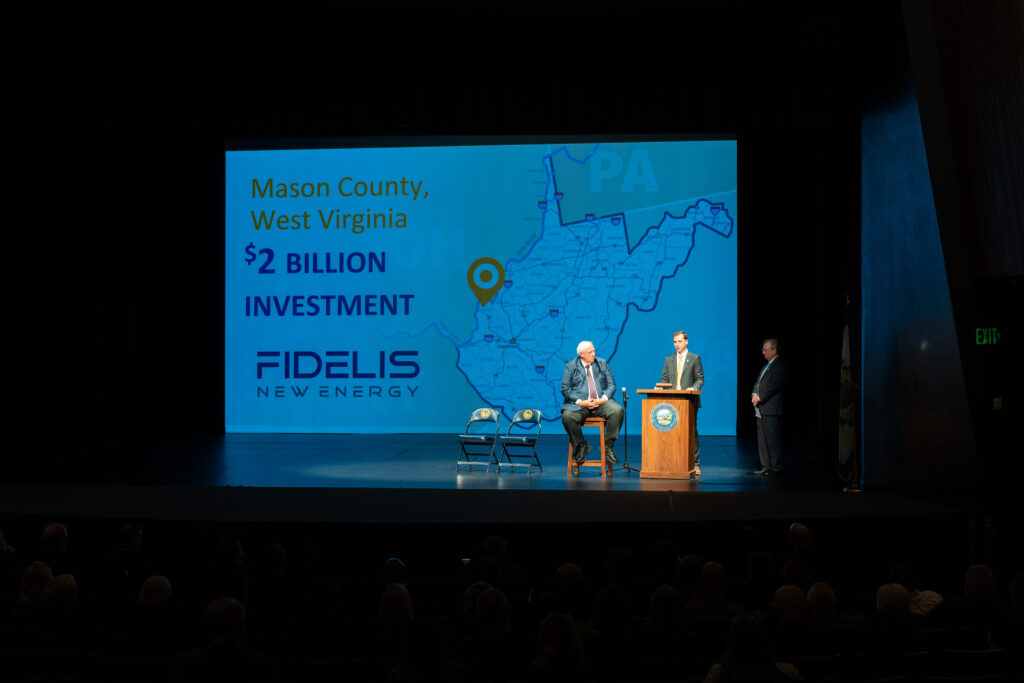Fidelis New Energy announced plans Wednesday to develop a hydrogen production facility in Mason County, as well as a hydrogen powered data center.
Gov. Jim Justice said Fidelis will invest $2 billion over time and when operational, it is estimated the project will employ up to 800 workers and be the largest natural gas user in the state. A press release specified the project will be built in four phases and employ 4,200 construction workers.
“The state today is looking for opportunities that may be this big. I can’t promise you in any way that every single button we push will be the absolute key to Emerald City,” Justice said. “I can promise you this, that we’re going to be wise in what we do. We’re not going to endanger our environment. We’re not going to endanger our way of life. Absolutely, with all in us, we want more and more goodness and opportunity to come to us.”
The location will implement technology that enables production of hydrogen with zero lifecycle carbon emissions from a combination of natural gas, carbon capture, utilization and sequestration (CCUS) and renewable energy.
Pete Hollis, who leads Fidelis’ carbon capture and sequestration efforts said the state’s geology makes it well suited for the in-ground storage necessary to keep the project carbon neutral.
“This includes technologies, techniques and procedures that support the safe and permanent sequestration of CO2 in deep sandstones and Dolomites that are prevalent throughout West Virginia, and these will not interfere or impact any of the drinking water or existing oil and gas production,” he said. “Prior to any injection of CO2, it’s important to know that we go through a very rigorous permitting process that requires approval from the US EPA, West Virginia Department of Resources, West Virginia Geological and Economic Survey and the West Virginia Department of Environmental Protection.”
Dan Shapiro, CEO of Fidelis, said this is the latest development in the state’s energy history.
“From the earliest days, West Virginia has been all into power and supply energy to the United States,” he said. “Mountain State powered us through wars, industrial development, the modern birth of modern chemistry that changed the course of human history and standard of living for people around the world. And now the words ‘all in’ also mean all of the above energy for energy security as well as ways to supply energy that we need using existing resources that also lower CO2 emissions.”
When all four phases of the project are operational, the state estimates permanent CO2 storage will provide over $100 million in annual revenue to the state.




















